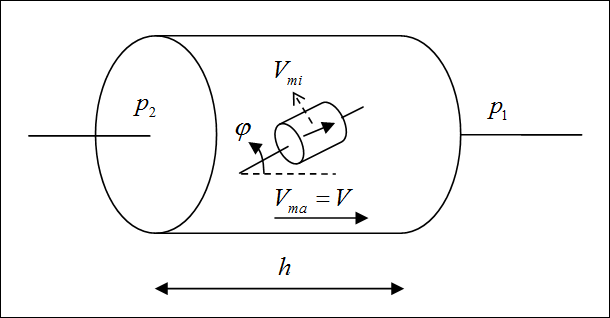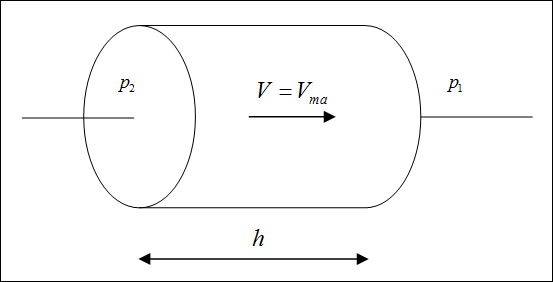MATPE1 |

|

|

|

|
|
MATPE1 |

|

|

|

|
Bulk Data Entry
MATPE1 – Material Property Definition
Description
Defines the material properties for poro-elastic materials.
Format
(1) |
(2) |
(3) |
(4) |
(5) |
(6) |
(7) |
(8) |
(9) |
(10) |
MATPE1 |
MID |
MAT1 |
MAT10 |
BIOT |
|
|
|
|
|
|
VISC |
GAMMA |
PRANDTL |
POR |
TOR |
AFR |
VLE |
TLE |
|
|
Field |
Contents |
MID |
Unique material identification number. No default (Integer > 0) |
MAT1 |
Material identification number of the MAT1 bulk data entry (or MATF1 if it is frequency-dependent) for the skeleton. No default (Integer > 0) |
MAT10 |
MAT10 bulk data entry identification number for the porous material. No default (Integer > 0) |
BIOT |
BIOT factor Default = 1.0 (Real > 0.0) |
VISC |
Fluid dynamic viscosity No default (Real > 0.0) |
GAMMA |
Fluid ratio of specific heats. Default = 1.402 (Real > 0.0) |
PRANDTL |
Fluid Prandtl number. Default = 0.71 (Real > 0.0) |
POR |
Porosity of the porous material. No default (Real > 0.0) |
TOR |
Tortuosity of the porous material (see Comment 2). Default = 1.0 (Real > 1.0) |
AFR |
Flow resistivity (see Comment 3). No default (Real > 0.0) |
VLE |
Viscous characteristic length (see Comment 4). No default (Real > 0.0) |
TLE |
Thermal characteristic length (see Comment 5). No default (Real > 0.0) |
| 1. | This entry is represented as a material in HyperMesh. |
| 2. | Tortuosity is defined as the complexity of the inner structure of a porous material. In the Biot material model, it is measured as the complexity of the flow path of the fluid in the porous medium. The fluid particles usually do not flow in a straight path. It is the measurement of the ratio of the square of microscopic velocity (Vmi) of the fluid in the entwined path to the square of macroscopic velocity (V = Vma). |


Figure 1: Microscopic velocity within a macroscopic system
If ![]() is the angle between the axis of the cylindrical microscopic pores, and the surface is normal, the tortuosity is inversely proportional to the square of
is the angle between the axis of the cylindrical microscopic pores, and the surface is normal, the tortuosity is inversely proportional to the square of  . The tortuosity of the material increases as the number of pores and complexity increases. Tortuosity is a dimensionless quantity and if it is equal to 1.0, then the directions of microscopic and macroscopic velocities are parallel (
. The tortuosity of the material increases as the number of pores and complexity increases. Tortuosity is a dimensionless quantity and if it is equal to 1.0, then the directions of microscopic and macroscopic velocities are parallel (![]() ).
).
| 3. | Flow resistivity represents the resistance of a porous material to the flow of fluid. In the Biot material model, it is used to characterize the ease with which fluid can flow through the porous medium. The fluid in the porous medium is affected by two opposing forces: viscosity and pressure gradient. Flow resistivity is defined as the ratio of the pressure differential across a sample of the material to the normal mean flow velocity (macroscopic velocity (V = Vma)) through the material. |

Where, ![]() is the flow resistivity, (p2 - p1) is the pressure difference in the sample of thickness, h and V = Vma is the normal mean flow velocity of fluid per unit area (macroscopic velocity).
is the flow resistivity, (p2 - p1) is the pressure difference in the sample of thickness, h and V = Vma is the normal mean flow velocity of fluid per unit area (macroscopic velocity).

Figure 2: Macroscopic model of the porous medium
In the Biot material formulation, viscosity is frequency-dependent, so the flow resistivity is also frequency-dependent. Static flow resistivity is usually in the range of 10e3 Nm-4s to 10e6 Nm-4s. A very high AFR number indicates that the poro-elastic material is highly resistant to the propagation of fluid. The SI unit of flow resistivity is: Nm-4s.
| 4. | The effective density of the poro-elastic material and its bulk modulus depend on the tortuosity and hydraulic radius. This takes into account the non-uniform channels of the porous medium. The viscous characteristic length can be used to replace the hydraulic radius. Viscous characteristic length is defined as: |

Where,
![]() is the viscous characteristic length
is the viscous characteristic length
viv is the velocity of the fluid inside the pores of the poro-elastic material
vis is the velocity of the fluid inside the surface of the poro-elastic material
5. The bulk modulus, at higher frequencies can be characterized by a second characteristic length defined as:

Where,
![]() is the thermal characteristic length
is the thermal characteristic length
dv is the microscopic volume of the poro-elastic material medium
ds is the microscopic surface of the poro-elastic material
The thermal characteristic length is also used to account for the non-uniform channels of the porous medium.
See Also: